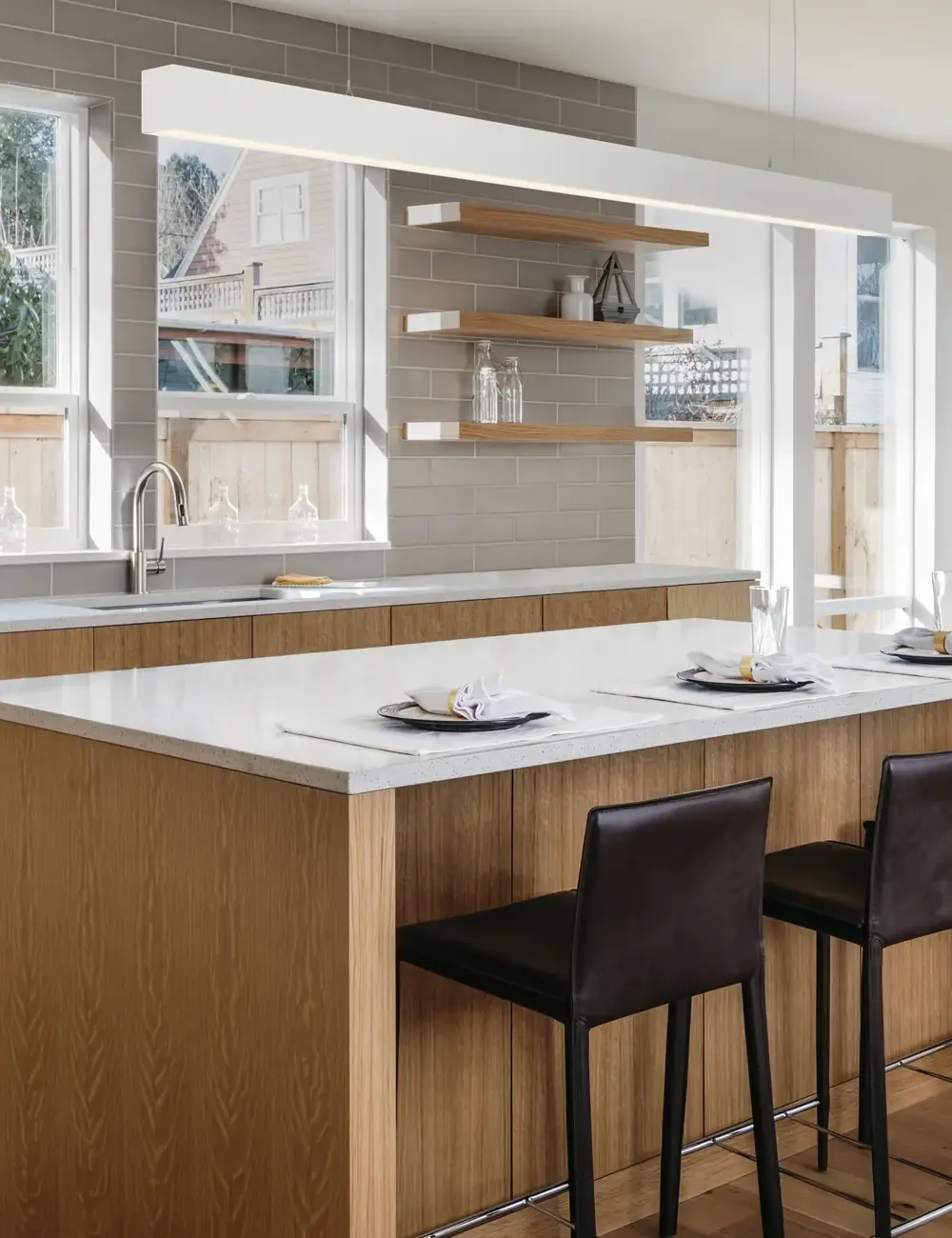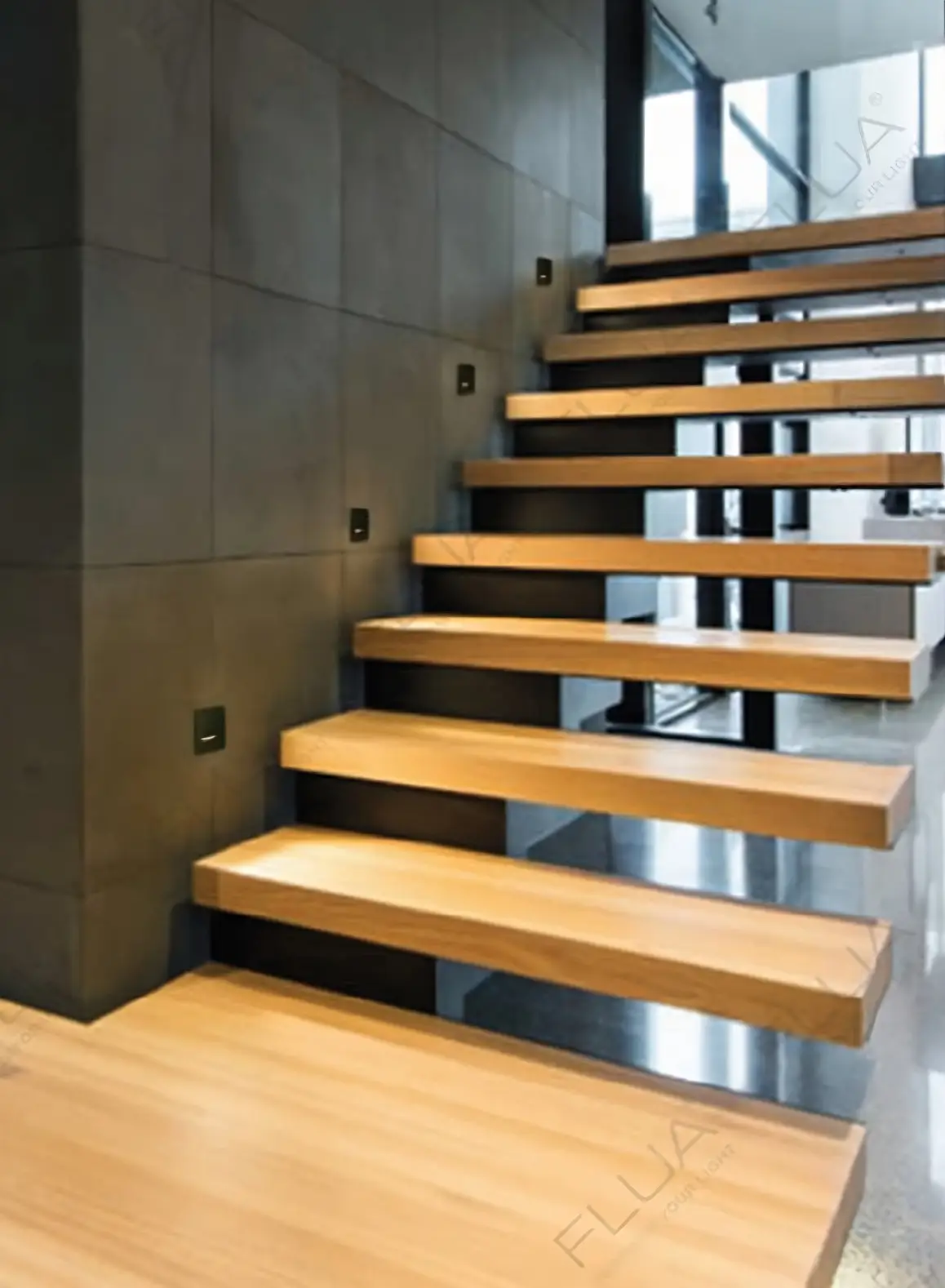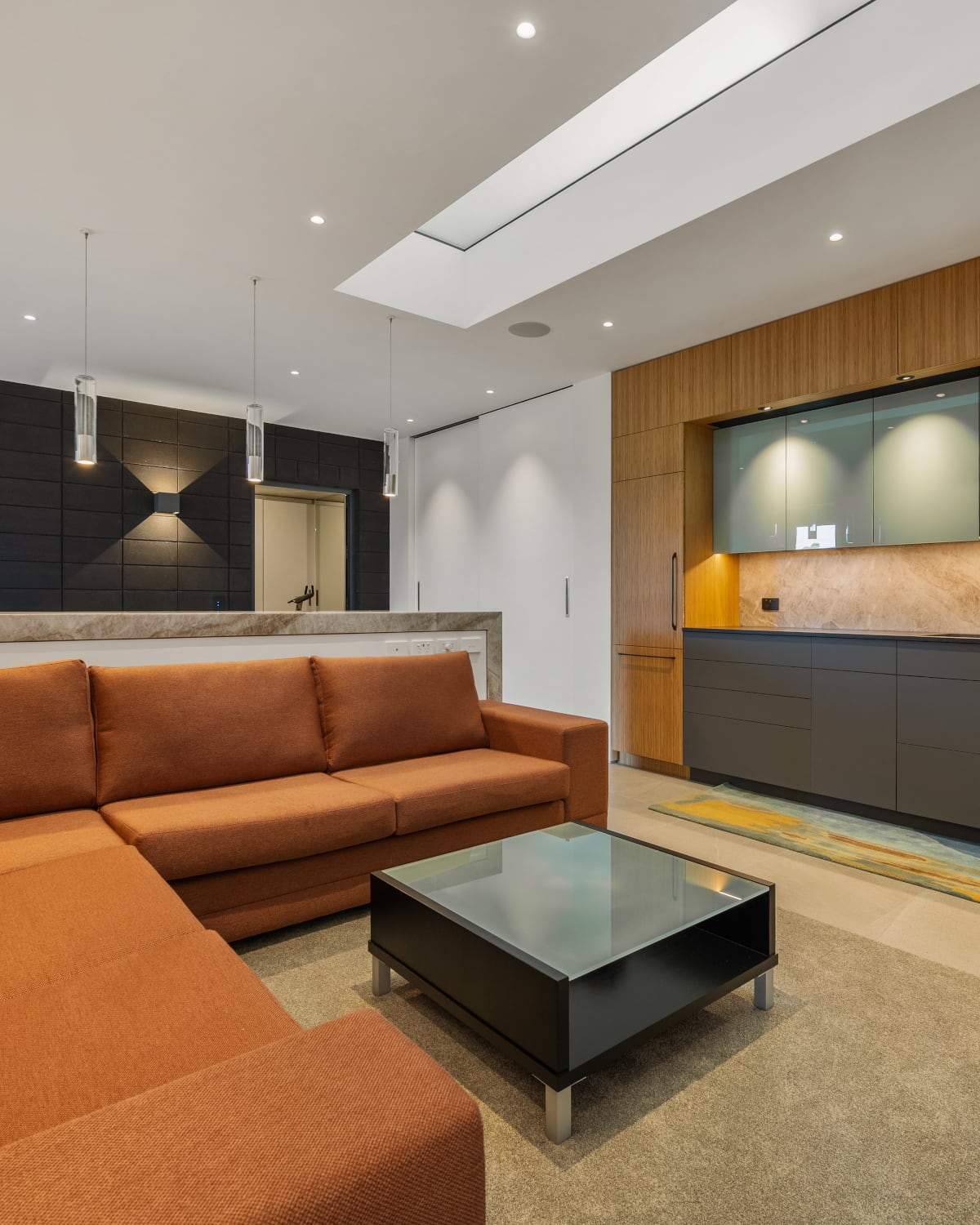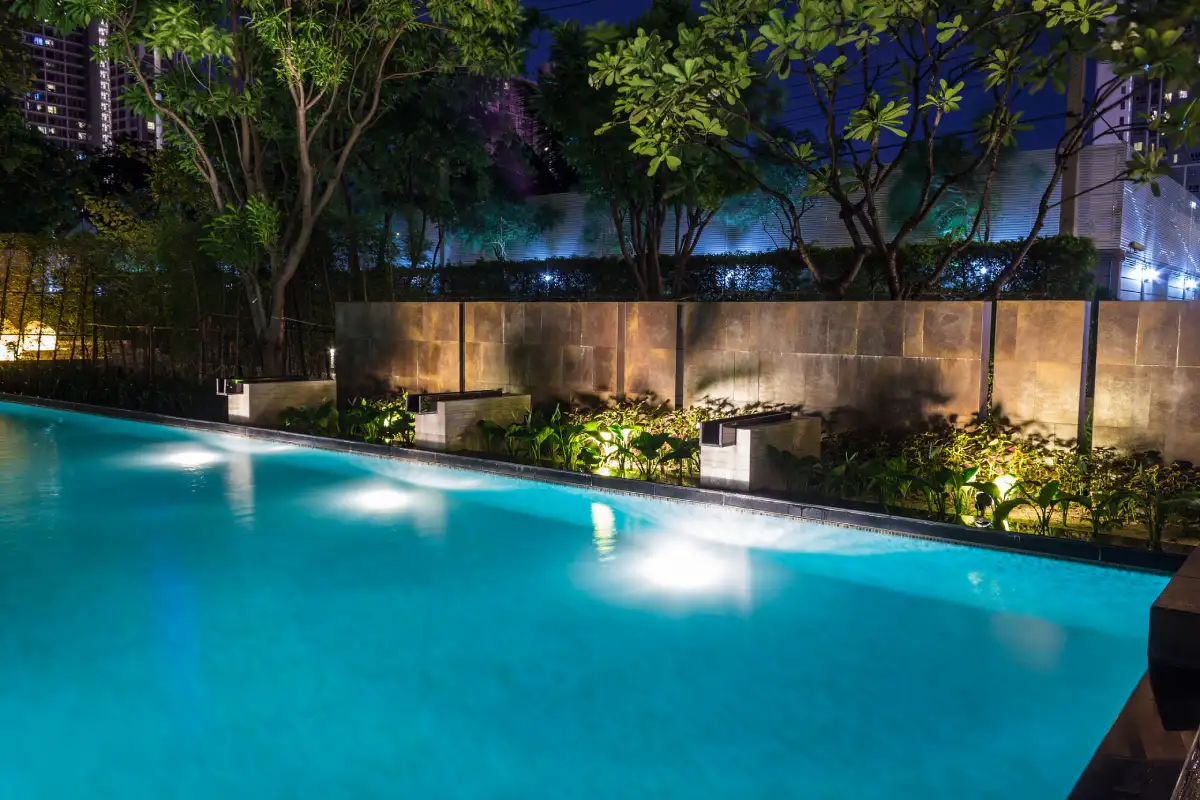What height should my pendant hang at?
In the centre of a living space you don’t want fittings to hang lower than 2.1m above the floor. This rule can be broken if a feature piece is close to a wall or a reading light beside a bed and in no danger of having someone walk underneath it.
Some ceilings are simply to low for a pendant, especially if it is a bigger space, if you have a 2.4m or 2.5m high ceiling its worth checking out our range of Semi-flush pendant lights, which are designed to bring a decorative element to lower stud heights.
In a large entry foyer with a high roof you want to hang the pendant so the bottom is 150mm higher than your front door for it to get the right presence in the space. Pendants add a sculptural element over stairs in a foyer space and are lovely when viewed from outside if you have large windows, but if they are above the stairs you need to make sure the bottom of the fixture isn’t going to hang too low. Hanging these lights 2.4 – 2.6m above the stairs that they hang over will make sure they don’t feel like they are in your space as you walk down the stairs.
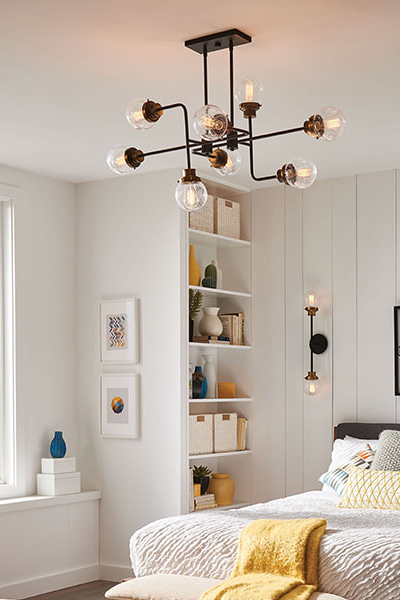
How to size a pendant for a dining table

If I have the chance I will always hang a pendant over a dining room table, having ambient light in a dining space is warmer, more relaxing and creates a softness that you just cant get from recessed lighting. To get a pendant or chandelier that is the right proportion for your dining table the diameter of the fitting should be 2/3 to 3/4 the width of table itself.
To bring in extra light for a longer dining table you can hang two pendants or a long linear style pendant. If you are going for two pendants over your table they should be around 1/3rd the table length in diameter and placed so that the outside of the pendant doesn’t come with 150mm of the end of the table. It is a modern look to hang a linear style fitting over rectangular dining tables, for the best look make sure the fitting is 300mm-500mm shorter than the table.
Unless you have nearby windows with a view you should always take the opportunity to hang your dining pendant lower over the table, Pendants should hang 750 – 900mm from the top of the table to the bottom of the fixture. This provides more ambient light for the dining space and a more striking view of the fixture itself.
How to size pendants for a kitchen island
One of the most popular places to hang a pendant in any home is over the kitchen island, they provide a decorative element to a large flat space and, if you find the right fixture, excellent task lighting.
The two main options are multiple smaller pendants or a single linear style pendant.
The rule for multiple pendants has been to hang them in odd numbered sets to create a balance, usually 3, but lately we have seen more clients hanging two pendants that are a larger scale over their kitchen island. If you want 3 fittings then the diameter should be around the length of the bench divided by 10. If you find an oversized fitting you love (400mm diameter or greater) you can throw the rules out and just hang two fittings, just make sure the pendants are not as close to each other as they are wide.
Linear pendants for kitchens are often very slim, don’t worry too much about the width of the fixutre but the length should be about 300mm-600mm shorter than your counter.
For the hanging height over the bench you would normally hang your kitchen bench pendants lower, around 900mm-1000mm is a good rule of thumb, the main thing to look out for is that you are not going to knock the pendant as you are cooking, so this might be higher if you have taller family members.

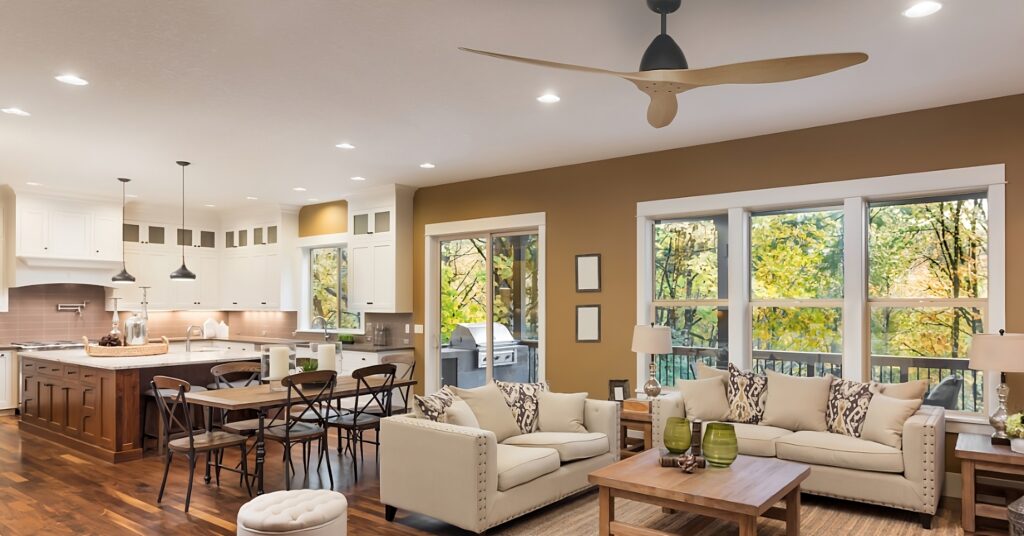
Can I have a pendant in my bathroom?
Yes, but you can’t put them everywhere. We have a handy article on this topic to explain more, but in the bathroom your pendant cannot hang lower that 2.25m from the floor above the bath. However common sense should prevail, above the bath try and find a pendant that is rated to at least IP44 or UL Damp rated, these fittings will last longer in a damp environment.
Hanging Mini Pendants either side of the mirror is a perfect way to add some style to your bathroom and to light yourself at the vanity, the pendant must be 600mm away from any water source (tap, shower or bath) or it will need to be rated to at least IP44 or UL Damp rated. Just make sure if you have a mirror cabinet the door wont swing into the lights.

